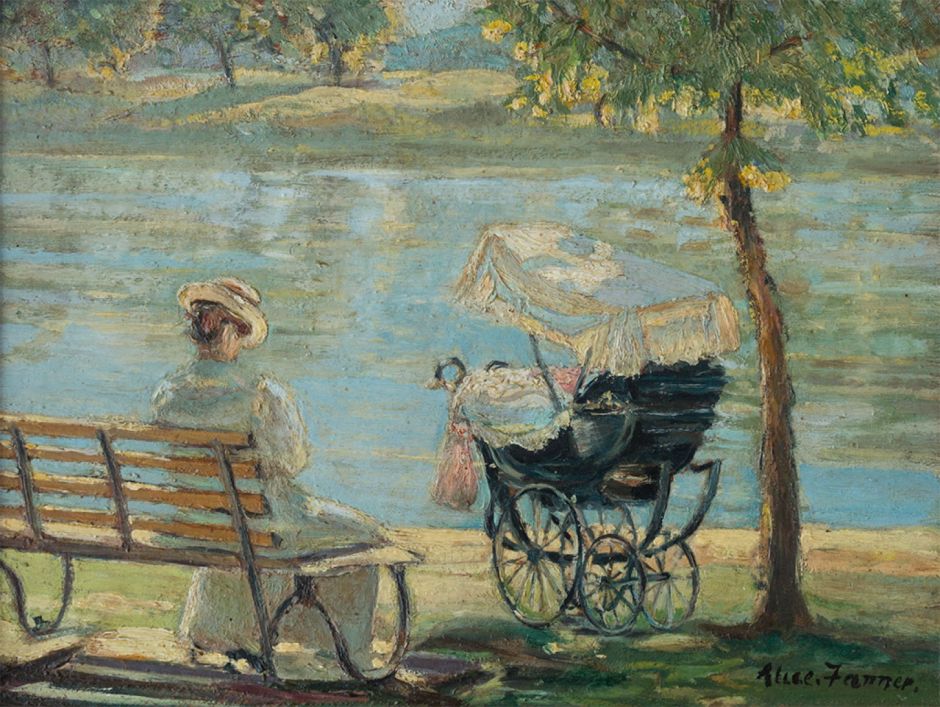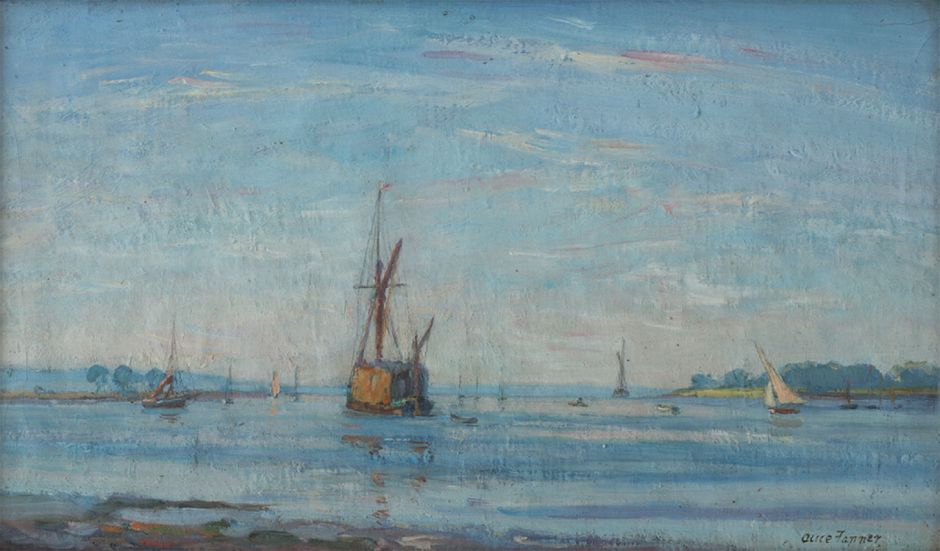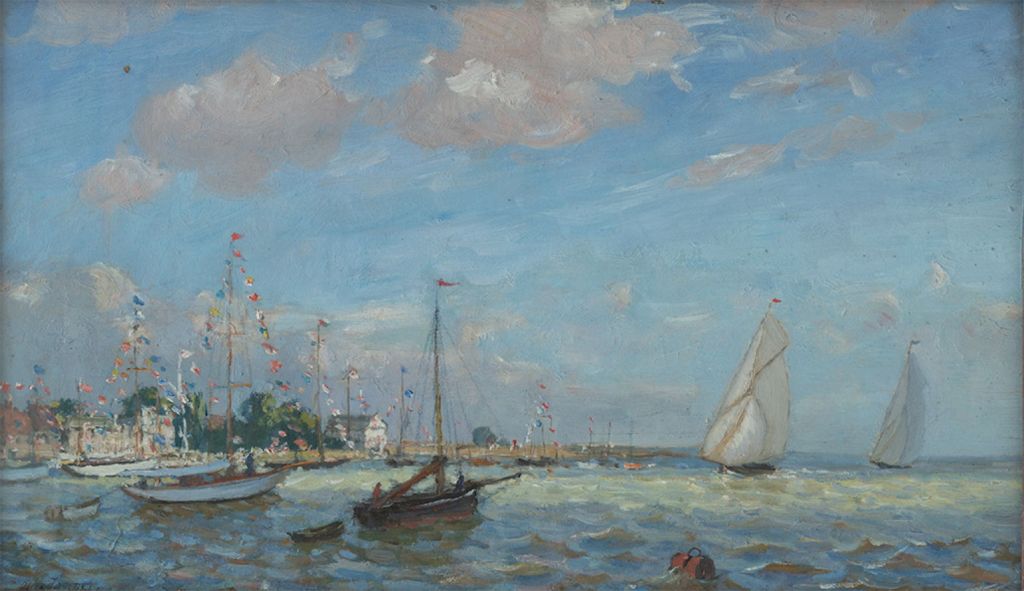Having covered one of the most famous painters at the turn of the nineteenth and twentieth centuries last week, this week I’d like to introduce you to one that almost none of you will ever had heard of: Alice Maud Fanner (1866-1930). Not only that, but I’m fairly certain that this is the first time that most of these works have been shown in public in the last eighty years or more.
Fanner was born in London in 1866, and studied art first at the Richmond School, then at the Slade School in London. Following that, she was a pupil of Julius Olsson (1864-1942), a notable marine painter who was largely self-taught and a leading member of the Saint Ives School. She also studied in Paris, although it’s unclear when or at which academy.
She married a merchant in 1890, and from then travelled widely, painting in Rio de Janeiro, France, Italy, and South Africa. The couple lived first in Twickenham before moving to Datchet on the north bank of the River Thames close to Windsor. During this period she taught at the Richmond School. She first exhibited at the Royal Academy in 1897, when she joined the New English Art Club. She is also thought to have exhibited at the Salon in Paris, and with the Society of Women Artists, of which she was a member.
These first two paintings were probably completed during the 1890s.

Roches Rouge Menton shows the French Mediterranean coast at Menton, near the border with Italy. These ‘red rocks’ form a point which is a local scenic attraction.

Summer Morning – Datchet shows a young woman with a baby in a pram on the bank of the River Thames.

She is thought to have painted this view of Hyde Park, London, in about 1900. The London plane trees are leafless, indicating that this is a fine day in the winter, although the figures look lightly dressed for that time of year. The view looks north-east towards the road encircling the park and mansions in Park Lane beyond.
In about 1911, she moved from Datchet back into London, then in about 1914 to Burnham-on-Crouch, a centre for yachting a little inland from the coast of south-east Essex. During her later years she appears to have painted in other coastal locations with yachting connections, including Ramsgate and Pegwell Bay in Kent, and Cowes on the Isle of Wight.
The other two paintings most probably date from after 1914, when she was at Burnham-on-Crouch.

Burnham-on-Crouch – Hay Barge shows an old barge moored in the estuary of the River Crouch, used for the transport of hay to market in London. Known as a stackie, local farmers used this to take their cut hay to sell as fodder for the many horses working in London before the widespread adoption of motor vehicles. (I’m very grateful to Tony for pointing this out: see his comment below for further detail.)

Burnham-on-Crouch – The Smack Race shows two racing boats heading into Burnham, where boats on the moorings are fully dressed for the occasion of the regatta.
Fanner died at Burnham-on-Crouch in 1930. Her paintings are in provincial art collections in the UK. Although limited information about her career remains, her paintings are overtly Impressionist in style, and she seems to have followed the popular path of returning from training in France to join the New English Art Club and become one of the British Impressionists. She was doubly unfortunate: in addition to being forgotten in the rush to Modernism in the early twentieth century, as a woman her art has been badly neglected on that account too.
I’d like to express my gratitude to Simon, who has generously given me permission to use his images, and provided information about Fanner.

